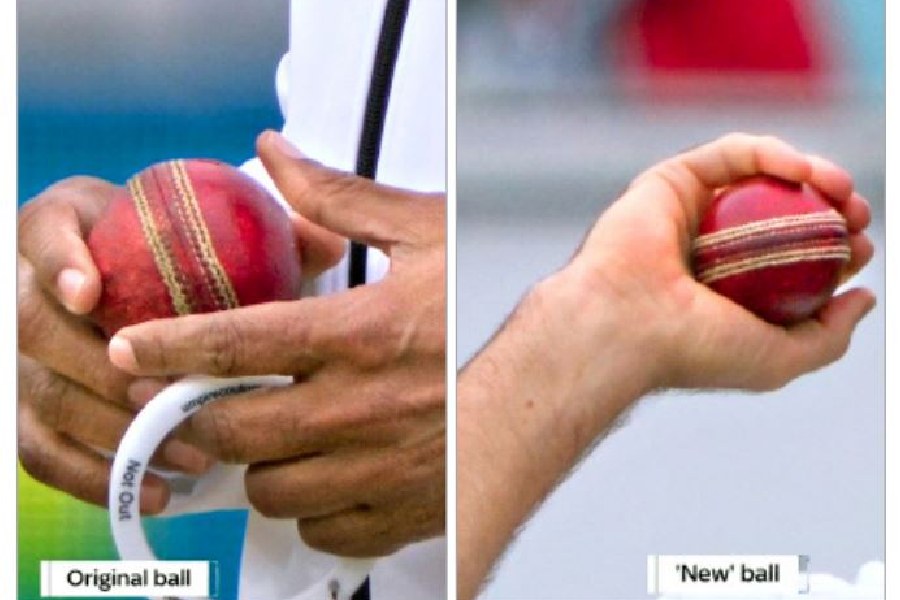A controversial ball change on the fourth evening of the final Test at The Oval has led to a massive debate with the Australians claiming that the replaced ‘new’ ball looked a lot fresher than the previous one.
The incident
Umpires Joel Wilson and Kumar Dharmasena changed the ball after the first delivery of the 37th over of Australia’s second innings, ruling that it had gone out of shape after Mark Wood hit Usman Khawaja on the helmet.
The replacement ball appeared to be significantly harder and newer than the one used previously. England took three wickets in overcast conditions on the fifth day morning before rain intervened. The ball aided seamers later in the day as well after play resumed.
Australian vitriol
The Australians have flayed the change with former captain and now pundit Ricky Ponting calling for an ICC “investigation” while Khawaja stated that he “hadn’t felt the ball hit my bat as hard” at any other stage of the series.
“The big thing was that ball. The first over after they changed that ball I knew straightaway this ball is very different. I went straight up to Kumar (umpire Dharmasena) and said ‘how old is this ball you’ve given them because it feels like it’s about eight overs old.’ You could see the writing on both sides and it hit my bat so hard,” Khawaja said. “I knew it’s going to be tricky.”
Ponting was scathing too. “The biggest concern I have is the big discrepancy in the condition of the ball that was chosen to replace the one (that had gone out of shape),” he said on Sky Sports. “There’s no way in the world you can even look at those two balls there and say in any way are they comparable.”
What the law states
Law 4.5 pertaining to ‘ball lost or becoming unfit for play’ states: “If, during play, the ball cannot be found or recovered or the umpires agree that it has become unfit for play through normal use, the umpires shall replace it with a ball which has had wear comparable with that which the previous ball had received before the need for its replacement. When the ball is replaced, the umpire shall inform the batters and the fielding captain.”
How the ‘new’ ball helped the bowlers
The Dukes cricket ball, used during the Ashes in England, tends to do more in the air and off the pitch due to its pronounced hand-stitched seam. Pakistan great Wasim Akram had once said: “Dukes, overall, for its hardness and good seam make it move nicely.”
The ‘new’ ball because of its hardness and prominent seam helped the English bowlers. It travelled faster through the air and helped conventional swing.
The basics of swing
A cricket ball swings in the direction the seam is pointing. The angle of the seam towards a right-handed batsman’s first slip causes the ball to swing conventionally away from the right-hander; and that towards leg-slip causes it to swing conventionally into a right-hander.
Hence all swing bowlers release the ball at an angle. This causes the seam to act like the rougher side and hence the swing. Reverse swing is the swing an old ball develops towards the shiny side rather than away.
Ponting’s call
Sky Sports’ ball-tracking data suggested the ball had both seamed and swung significantly more on the fifth morning than on the fourth afternoon, prompting Ponting to call for an investigation. “I think it’s a huge blunder that needs to be investigated,” the former captain said.











